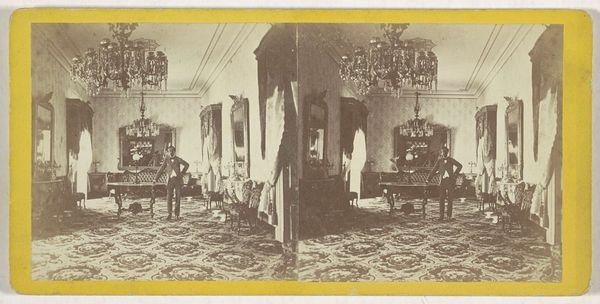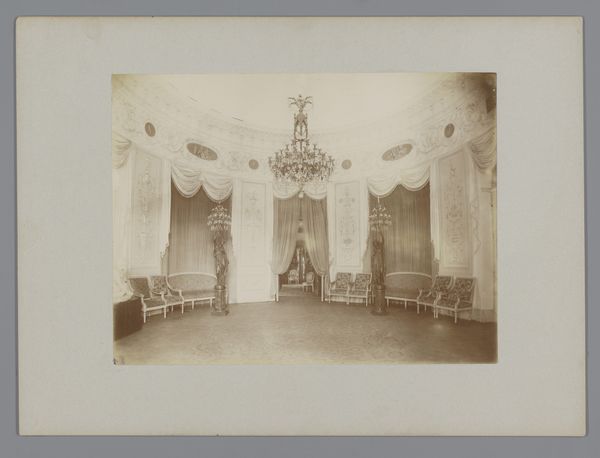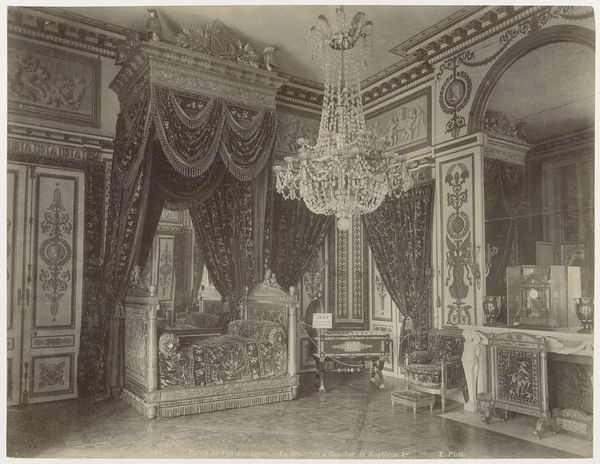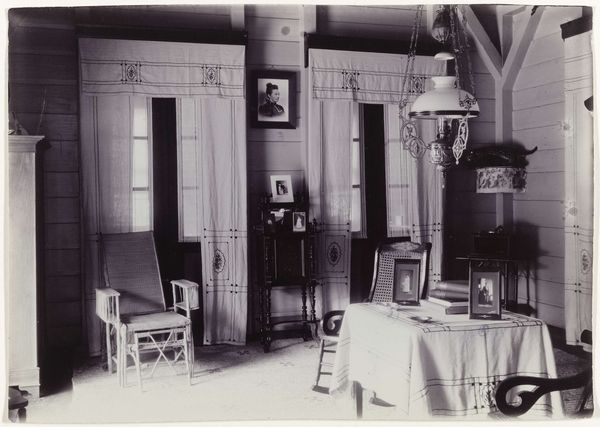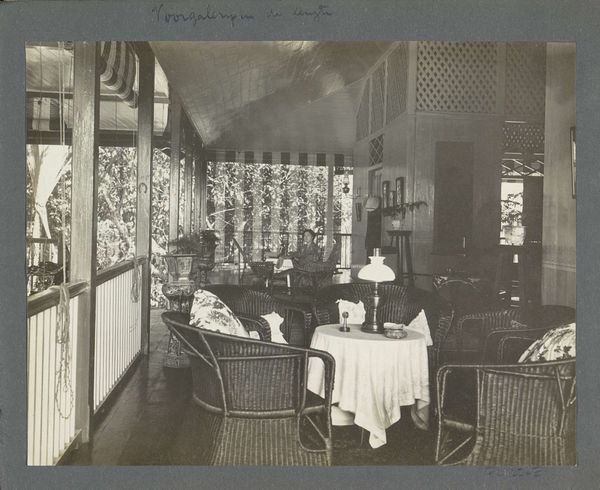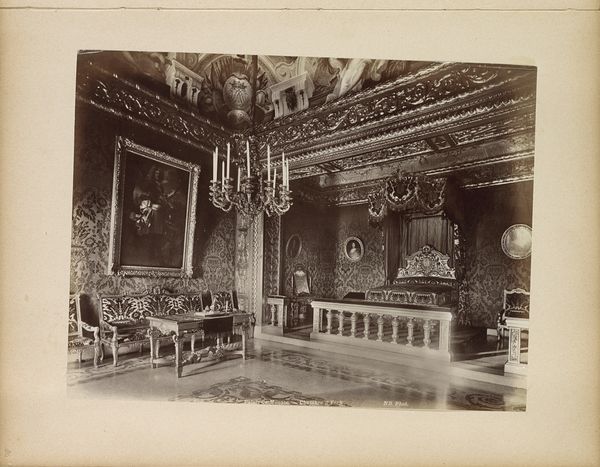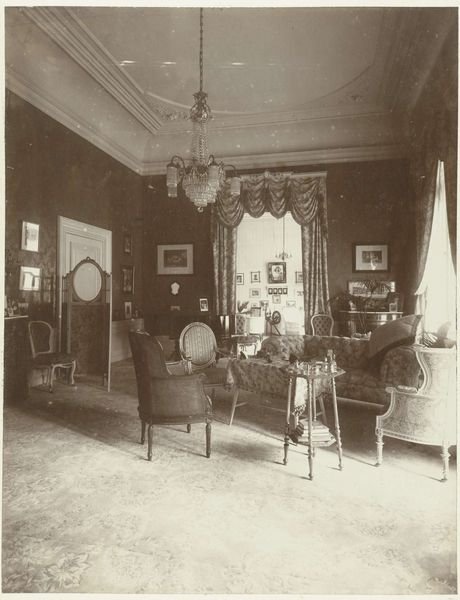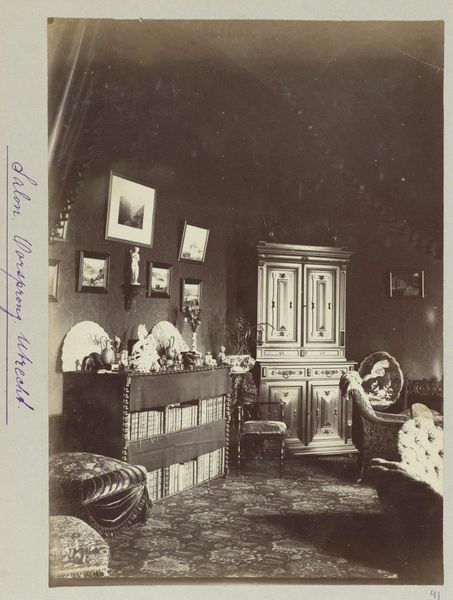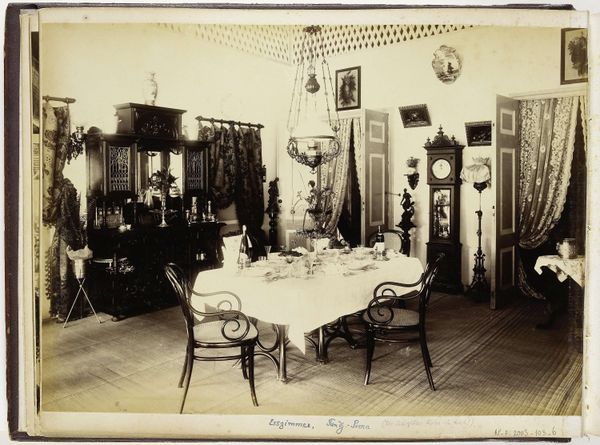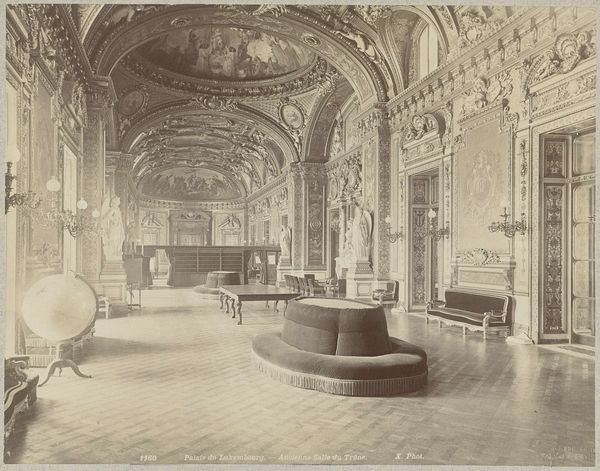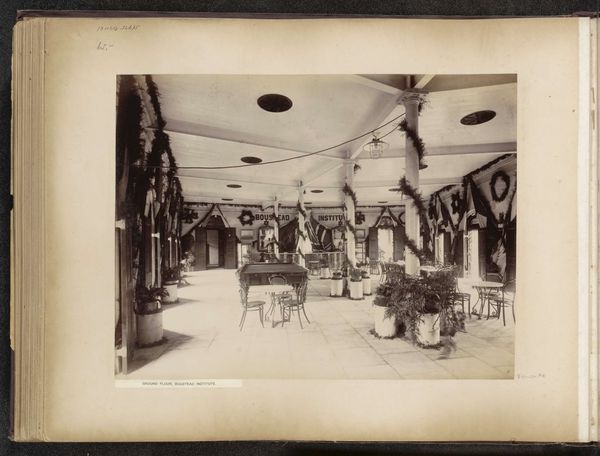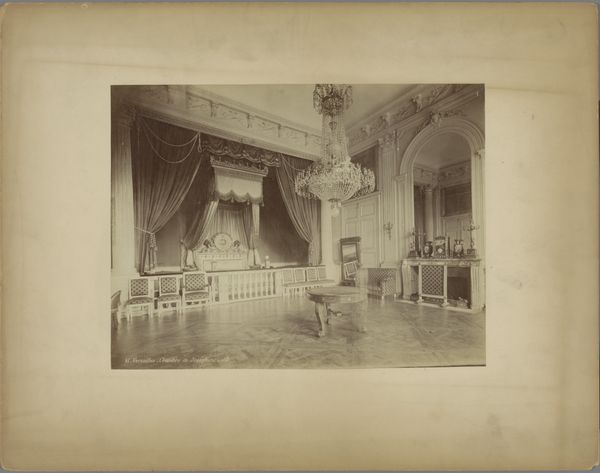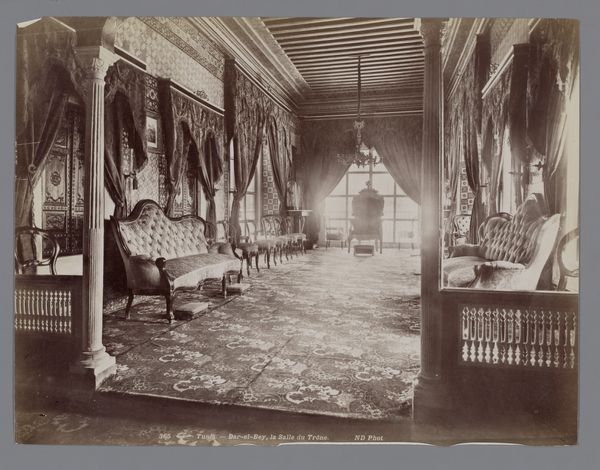
photography
#
photography
#
orientalism
Dimensions: height 211 mm, width 275 mm
Copyright: Rijks Museum: Open Domain
Editor: We’re looking at a photograph from somewhere between 1870 and 1900, "Salon in het paleis van de sultan van Johor," by G.R. Lambert & Co., currently held in the Rijksmuseum. The image is of a lavish palace interior. It feels staged, almost like a film set. What stands out to you? Curator: Indeed, this photograph speaks volumes about the power dynamics at play during that period. This "Orientalist" style, while seemingly documenting reality, often constructs a romanticized, even exoticized, view of non-Western cultures. We see signifiers of wealth – the elaborate chandeliers, ornate vases, the sheer number of objects… Consider, though, what isn't shown: the labor, the socio-political context that allowed such opulence to exist. How do you think the absence of people beyond perhaps those who serve impacts the photograph's meaning? Editor: That’s a great point! It feels like the space exists almost separate from people, focusing instead on just… things. So is it suggesting an artificial fantasy then? Curator: Precisely! The carefully arranged furniture, the lush plants, everything contributes to a carefully crafted image of power. The lack of naturalism prompts questions: who was this photograph intended for, and what message was it meant to convey about Johor and its Sultan? Is it a depiction, or an active construction, of colonial power and authority? Editor: I never considered the power of what’s *not* in a picture before! That’s fascinating. Thanks for making me rethink my initial read of it! Curator: Absolutely! Examining absences, interrogating whose story is being told—and, crucially, whose is not—is critical to understanding visual culture and its complex relationship to history. It helps to engage with these materials critically, thinking beyond initial aesthetic impressions.
Comments
No comments
Be the first to comment and join the conversation on the ultimate creative platform.
